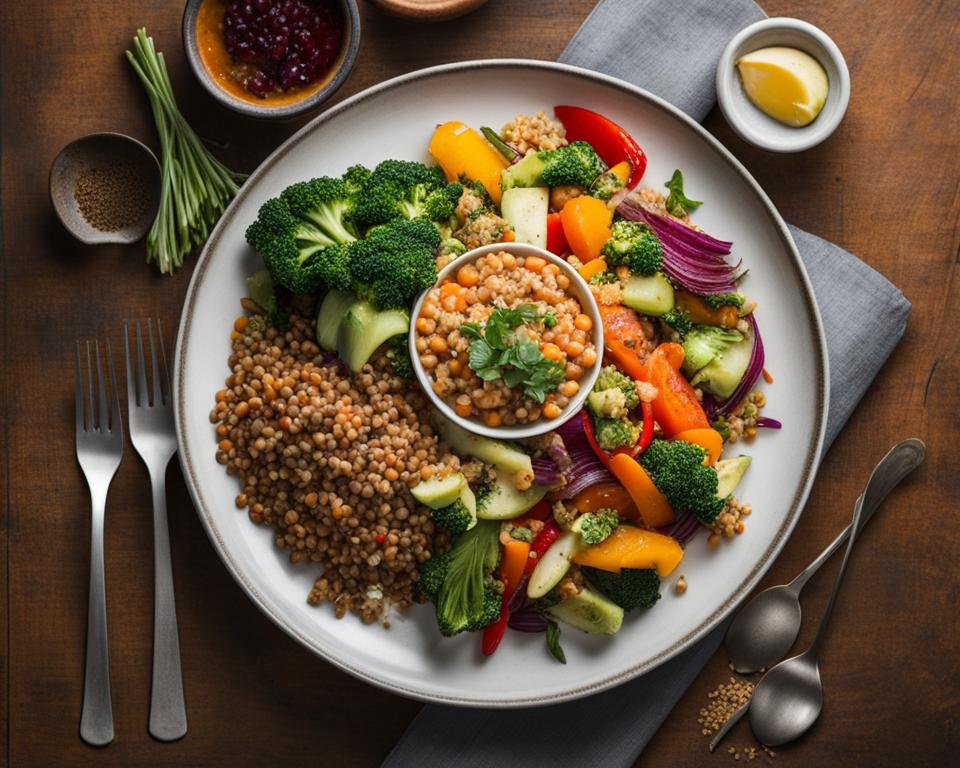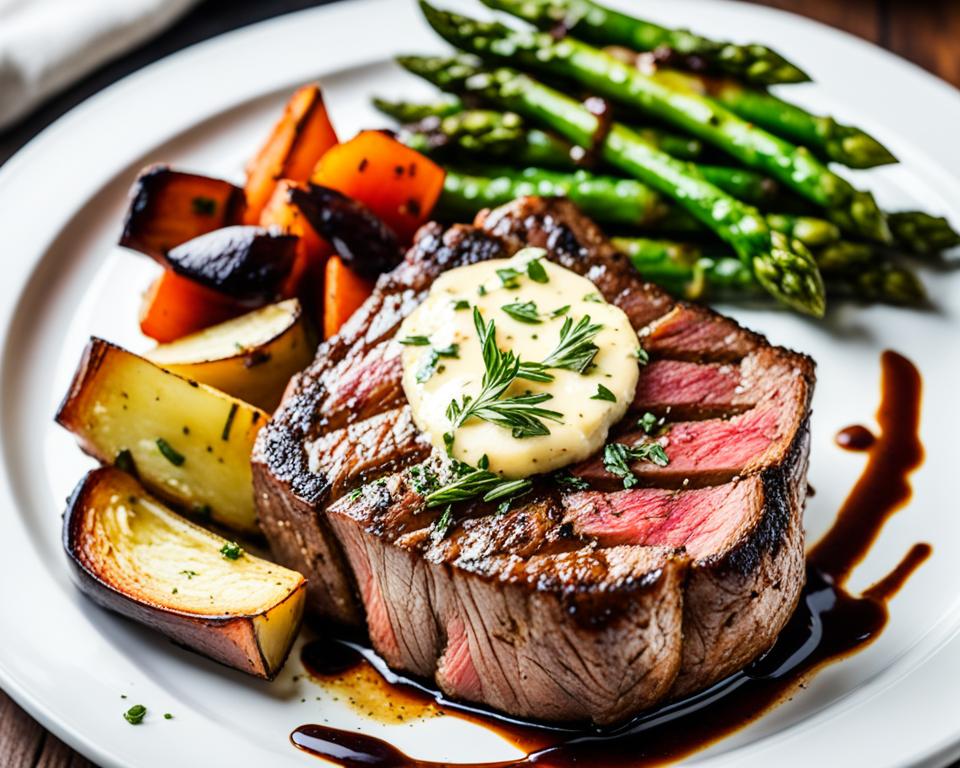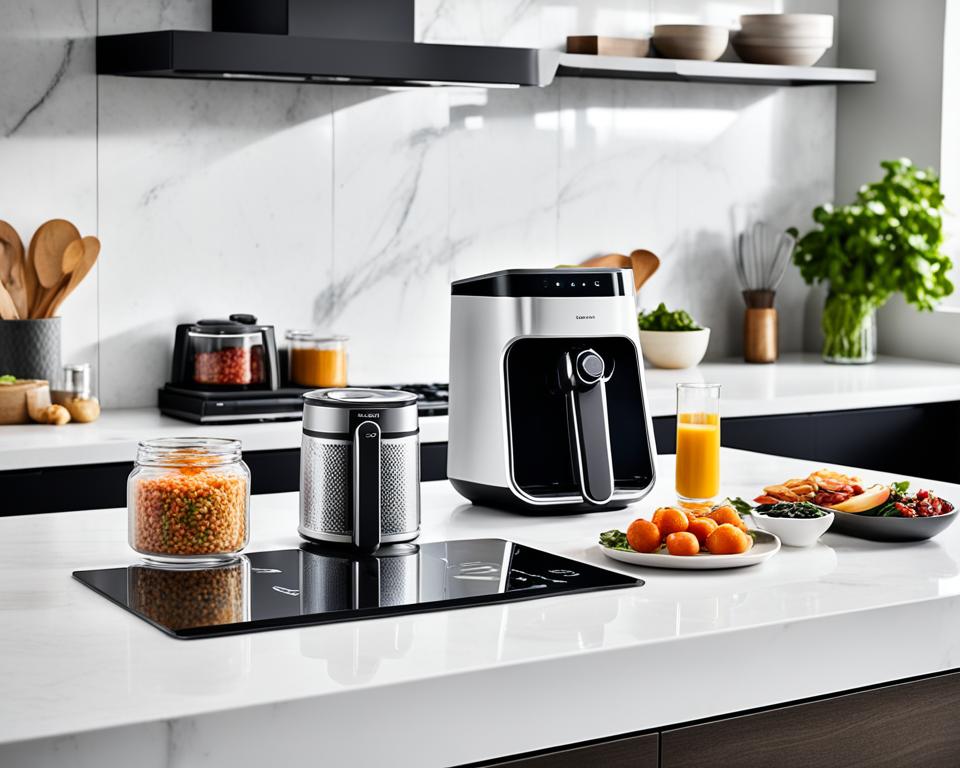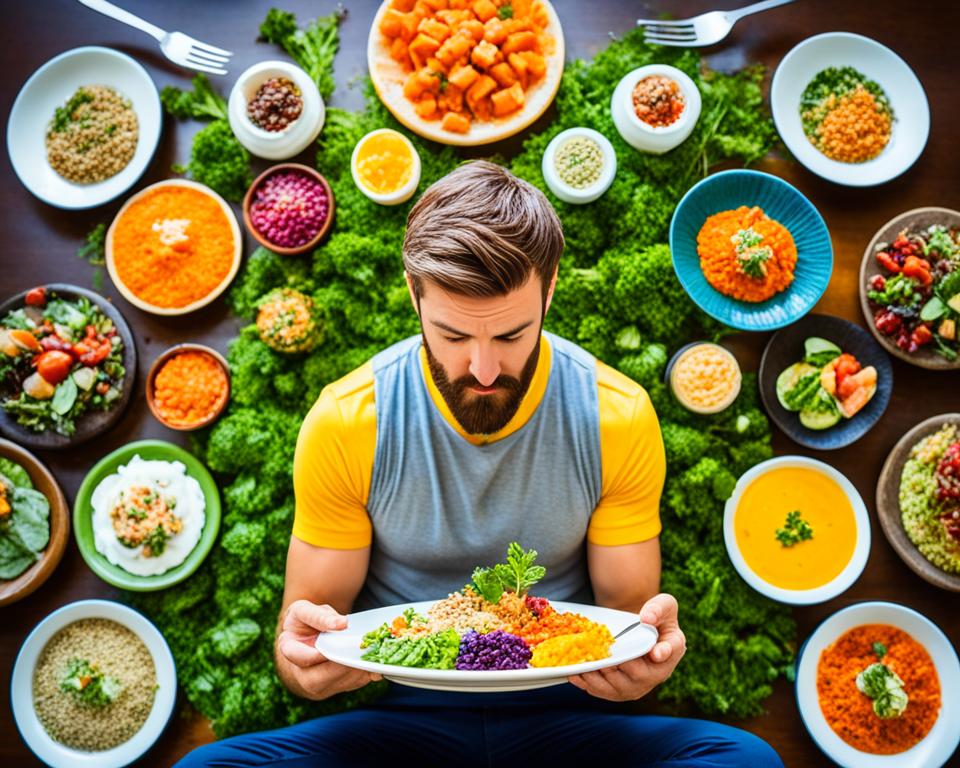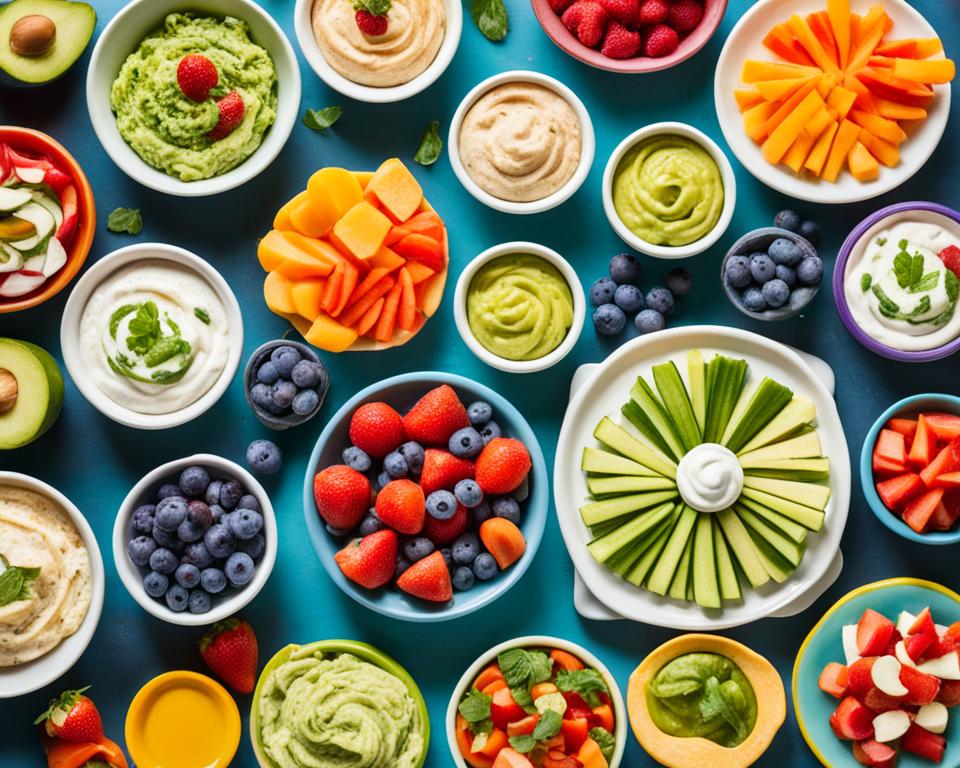Have you ever opened your fridge and discovered forgotten leftovers lurking at the back? You’re not alone. According to a recent survey, almost half of Americans have found overlooked items in their refrigerators within the past month. Not only does this contribute to food waste, but it also means missed opportunities to save money. That’s why it’s time to get creative with your leftovers and transform them into delicious new meals.
By utilizing your leftovers purposefully and storing them smartly, you can save money while enjoying a variety of tasty dishes. With a little planning and some innovative thinking, you can turn last night’s dinner into a mouthwatering creation. Let’s explore some tips and ideas for making the most of your leftovers.
Key Takeaways:
- Utilize leftovers by planning meals that intentionally create them.
- Store leftovers in glass containers to prevent them from being forgotten.
- Label and date leftovers to keep track of what’s inside.
- Repurpose leftovers into new dishes by combining ingredients creatively.
- Transform stale bread into delicious bruschetta or croutons.
Create purposeful leftovers
When it comes to meal planning, it’s essential to think beyond the initial dish and consider the potential of leftovers. By being intentional about creating leftovers that can be repurposed, you can save both time and money. Here are some creative ideas to transform your leftovers into delicious new meals:
- Roasted Chicken: If you’re roasting a chicken, plan ahead to use the leftover chicken in sandwiches, salads, or even a hearty chicken soup.
- Extra Vegetables or Rice: Cook some extra veggies or rice to use in future dishes like comforting soups or flavorful stir-fries.
By incorporating these leftover recipe ideas into your meal planning, you’ll not only reduce food waste but also enjoy tasty and convenient meals throughout the week.
“Cooking with leftovers doesn’t have to be boring or monotonous. With a little creativity and planning, you can turn yesterday’s meal into today’s culinary delight!”
Repurposing Leftovers
Leftovers are full of potential, waiting to be transformed into new and exciting dishes. Here are some innovative ideas to inspire your leftover cooking adventures:
- Veggie-Packed Pasta Sauce: Combine leftover cooked vegetables with a can of tomatoes to create a nutritious and flavorful pasta sauce.
- Stir-Fry or Burritos: Use leftover rice, meat, and vegetables to whip up delicious stir-fries or wrap them in burritos for a quick and satisfying meal.
- Transformed Soups: Puree steamed, roasted, or grilled vegetables with broth to create vibrant and nourishing soups. No vegetable goes to waste!
- Savory Bruschetta: Don’t toss that stale bread! Drizzle it with olive oil, bake until crisp, and top with your favorite ingredients for mouthwatering bruschetta.
Incorporate these leftover recipe ideas into your cooking routine, and you’ll be amazed at the delicious meals you can create while reducing food waste. Get creative and turn those leftovers into culinary masterpieces!
Smart storage and organization
Properly storing leftovers is key to preventing food waste and maximizing their potential. By utilizing smart storage and organization methods, you can ensure that your leftovers stay fresh and easily accessible. Here are some tips to help you store your leftovers effectively:
Glass Storage Containers
When it comes to storing leftovers, using glass storage containers is a wise choice. Not only are they reusable and sustainable, but they also have several advantages over plastic containers. Glass containers are transparent, allowing you to see the contents at a glance, which reduces the chances of forgetting about them. They are also microwave-safe, making reheating a breeze. Additionally, glass is non-porous and doesn’t absorb odors, keeping your leftovers fresh and flavorful.
Freezing Leftovers
Freezing leftovers is a fantastic way to extend their shelf life and have ready-to-eat meals on hand. When freezing leftovers, opt for zip-top gallon bags that can be washed and reused, reducing waste. Before storing your leftovers in the bags, make sure to remove as much air as possible to prevent freezer burn. Label each bag with the contents and date to keep track of what’s inside. Freezing leftovers in individual portions allows you to thaw only what you need, minimizing food waste and providing convenient meal options.
| Advantages of Glass Storage Containers | Advantages of Freezing Leftovers |
|---|---|
|
|
“Using glass storage containers is an excellent way to keep your leftovers fresh and reduce waste. When freezing leftovers, proper packaging and labeling are essential for easy identification and minimizing food waste.”
By dedicating a specific area in your fridge or freezer for storing leftovers, you can easily locate them when needed. This practice helps to avoid the scenario of forgotten leftovers languishing at the back of the fridge until they become inedible. Additionally, arranging your glass storage containers and zip-top bags in an organized manner optimizes space and prevents any accidental spills or leaks.
With these smart storage and organization tips, you can ensure that your leftovers are stored properly, easily accessible, and ready to be transformed into delicious meals.
Repurposing leftovers into new meals
Instead of seeing leftovers as boring repeats, let’s think of them as ingredients for creating new and exciting dishes. With a little creativity, we can transform those leftover pasta and cooked vegetables into a delicious frittata or blend them with a can of tomatoes to whip up a veggie-packed pasta sauce. How about using the leftover rice, meat, and vegetables to make mouthwatering burritos or stir-fries? And if you have some steamed, roasted, or grilled vegetables left, consider pureeing them with broth to make a flavorsome soup. Don’t forget that stale bread can be transformed into a delightful bruschetta by simply drizzling it with olive oil and baking it. The possibilities are endless when it comes to repurposing leftovers!
Let’s get even more creative by experimenting with different combinations and flavors. Combining leftovers allows us to create unique and tasty meals while reducing food waste. It’s a win-win situation!
Repurposing Leftovers Ideas:
- Leftover pasta and cooked vegetables: Frittata or veggie-packed pasta sauce.
- Leftover rice, meat, and vegetables: Burritos or stir-fries.
- Steamed, roasted, or grilled vegetables: Soup by pureeing with broth.
- Stale bread: Bruschetta by drizzling with olive oil and baking.
Don’t be afraid to think outside the box and try new combinations. Whether it’s mixing different ingredients or adding a dash of spices, incorporating innovative ideas for leftovers can result in surprising and delicious meals.
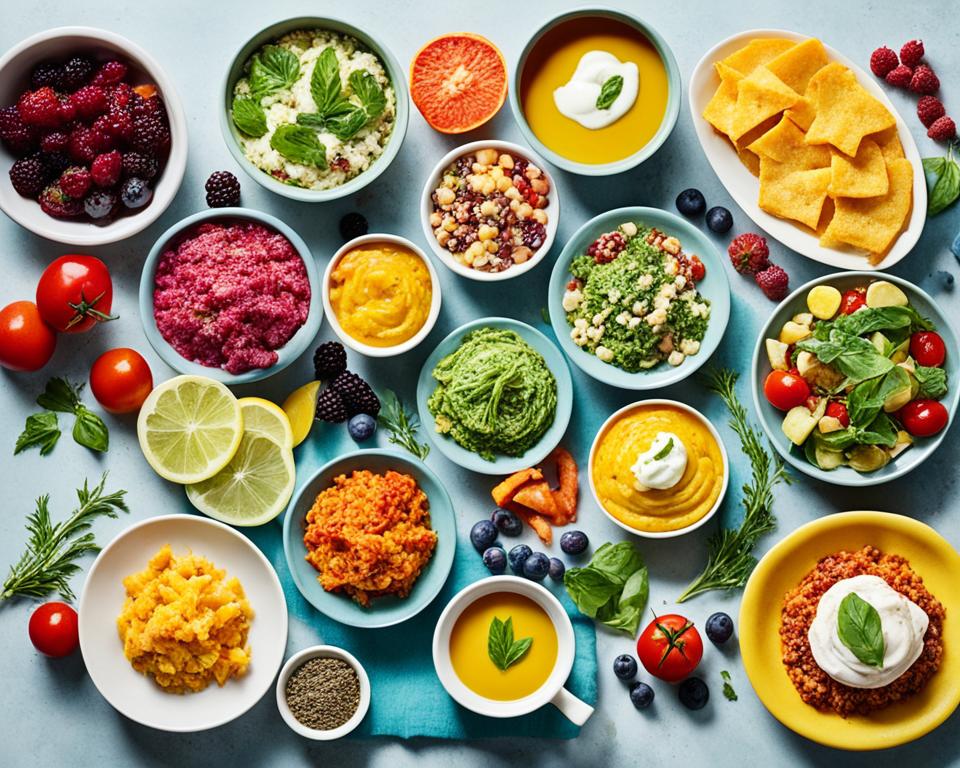
| Leftovers | New Meal Idea |
|---|---|
| Leftover pasta and cooked vegetables | Frittata or veggie-packed pasta sauce |
| Leftover rice, meat, and vegetables | Burritos or stir-fries |
| Steamed, roasted, or grilled vegetables | Soup by pureeing with broth |
| Stale bread | Bruschetta by drizzling with olive oil and baking |
Conclusion
Repurposing leftovers is a smart and budget-friendly way to reduce food waste and save money. By incorporating intentional meal planning and creative repurposing techniques, you can transform ordinary leftovers into delicious new meals.
When planning your meals, think ahead and consider how you can repurpose the leftovers. Roasting a chicken? Use the leftover meat in sandwiches or salads. Cooking rice or vegetables? Save them for soups or stir-fries. Being mindful of creating purposeful leftovers ensures that you have the foundation for future meals that require less time and effort.
Proper storage and organization are key to maximizing the use of your leftovers. Invest in reusable glass containers for storing leftovers, which not only make it easy to see what’s inside but also help reduce the chances of forgetting about them. Label and date each container or bag to stay organized and prevent food from going to waste. Dedicate a specific area in your fridge or freezer for storing leftovers so they are always within reach.
Repurposing leftovers not only saves you money but also contributes to reducing food waste and its environmental impact. From turning pasta into frittatas to blending vegetables into soups, the possibilities are endless. Embrace your creativity in the kitchen and explore unique combinations to create delicious and innovative dishes out of your leftovers. By repurposing leftovers, you’ll not only enjoy money-saving meals but also contribute positively towards a more sustainable future.
FAQ
How can I use leftovers creatively to make new meals and save money?
To use leftovers creatively and save money, plan meals that intentionally create leftovers that can be repurposed into new dishes. Store leftovers smartly in reusable glass containers and label them properly to prevent forgetting about them. Dedicate a leftovers night each week to use up any excess food in your fridge or freezer.
What are some ideas for creating purposeful leftovers?
When planning meals, consider what the leftovers from each meal can become. For example, roast a chicken and plan to use the leftover chicken in sandwiches or salads. Cook extra vegetables or rice to use in future dishes like soups or stir-fries. Be intentional about creating leftovers that can be transformed into new meals, saving you time and money in the long run.
How should I store leftovers to prevent food waste?
It’s important to store leftovers smartly to prevent food waste. Opt for reusable and sustainable glass storage containers, as they allow you to see what’s inside and reduce the chances of forgetting about leftovers. For freezing leftovers, use zip-top gallon bags that can be washed and reused. Label and date the contents of each container or bag to keep track of what’s inside. Dedicate a specific area in your fridge or freezer for storing leftovers so they’re easy to find.
What are some innovative ideas for repurposing leftovers into new meals?
Instead of seeing leftovers as repeats, think of them as ingredients for creating new dishes. Turn leftover pasta or cooked vegetables into a frittata or blend them with a can of tomatoes to create a veggie-packed pasta sauce. Use leftover rice, meat, and vegetables to make burritos or stir-fries. Transform steamed, roasted, or grilled vegetables into soup by pureeing them with broth. Stale bread can be turned into delicious bruschetta by drizzling it with olive oil and baking it. Get creative and experiment with different combinations to make unique and tasty meals from your leftovers.
How can repurposing leftovers help save money?
Repurposing leftovers is a great way to save money and reduce food waste. By planning meals that intentionally create leftovers, storing them properly, and getting creative with repurposing, you can transform ordinary leftovers into delicious new meals. Not only does this save you money, but it also helps to reduce food waste and contribute positively to the environment.

